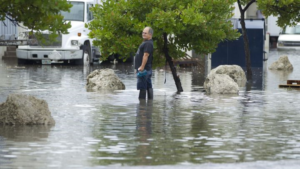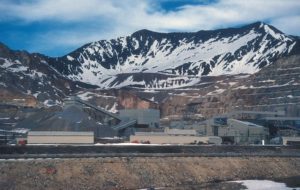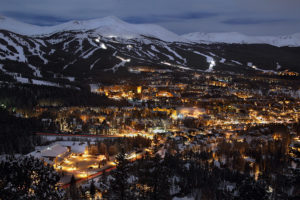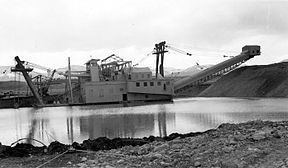Climate Change
Here it is, the last day of November, and we still have some tomatoes from our garden. We had the hard freeze a couple of weeks ago, but we brought quite a few in before it froze. This fall has been the fall of pasta sauce and tomato soup. Traditionally the first freeze is in September or early October. Not this year. Now, just because we have one warm fall doesn’t necessarily mean global warming, it is a matter of relatively long term trends. That is happening, folks.
Worldwide, it is about one degree Celsius and climbing. The culprit is carbon. We need carbon, our bodies are mostly water, but carbon hangs everything together. Florida, for example, is mostly calcium carbonate, limestone. The limestone formed even the peninsula was underwater with a climate encouraging the growth of untold billions of tiny organisms with calcium carbonate shells. They die, and if whales don’t eat them, their shells sink to the sea floor. Well, even if they do get eaten, the whale turds are calcareous.
Millions of years and sea level change, and Florida emerges. The cycle doesn’t end there. It rains on Florida, and the slightly acidic rain starts dissolving the limestone, sending the carbonates back to the sea. Enough of the limestone has dissolved to make the peninsula a honeycomb. Sinkholes, underground rivers, high tides bringing ocean water inland and flooding streets in Broward county. The southern part of the state is headed back underwater. The really big deal is that sea level is rising.
I have given an example of the carbonate cycle, which is going on worldwide. The other cycle going on is the water cycle. Our planet is delicately balanced in temperature around the freezing point of water. The water evaporates, and if it is cool enough, some of it falls as snow and accumulates, mostly in the polar regions. At times the ice forming from all that snow has made it as far as Central Park in New York, that is a lot of water tied up on land. Sea level drops, and Florida emerges.
Currently, the cycle is going the opposite direction. The ice is melting, and the process seems to be accelerating. Why? Carbon. Here in Denver, I see huge coal trains hauling coal south to be burned to run air conditioners in Texas. The coal, carbon, is ripped from the ground where it has lain for millions of years, mostly dead plant life converted into coal. It is burned, sending carbon into the atmosphere. I drove here to the coffee shop burning gasoline, which comes from oil made deep underground from what once were living organisms. The carbon goes into the air, the climate changes due to human activity. We are in a new epoch, the Anthropocene.
Elemental carbon is fairly rare. Diamonds, graphite. Carbon likes to combine with other stuff to make, well, us and other living things. That carbon gets sequestered in the earth, reducing the amount of carbon available to make new stuff. There is a cyclical balance, dependent on worldwide temperature and, lately, us. We burn carbon based fuels and the carbon dioxide goes into the atmosphere.
The sun shines, warming everything up. A lot of that heat gets radiated back into space, maintaining a balance favorable to life. When that radiant heat meets a CO2 molecule, it warms the molecule. More carbon, more heat in the atmosphere. That’s greenhouse gas doing its thing. The global climate warms up, making some regions wetter, some more dry. We have gotten used to having a relatively stable climate, and we adapt to it in many ways.
When the rain and snow fall changes, our adaptations stop working so well. This is especially important in coastal regions, because all that polar ice starts melting and sea level rises. Most of the population lives near the coast. With the coasts moving inland, the people and all their stuff will have to move as well. Battery Park at the southern tip of Manhattan gets flooded in big storms. The subway tunnels flood, and people have trouble getting around. The time is coming when they will be living in central New Jersey. The horror.
There are lots of people denying all this, saying it is just the normal weather cycle. That is true, but it is a new normal, and is changing. What to do? Stop putting so much carbon into the air and start putting it back into the earth. That means big change in the way we do things, and those getting rich on the status quo don’t want their businesses upset. Oil and coal, mostly, but they drive all of our economy. So, they say it isn’t so, and let’s burn, burn, burn.
What goes around comes around. It is just a matter of time.








